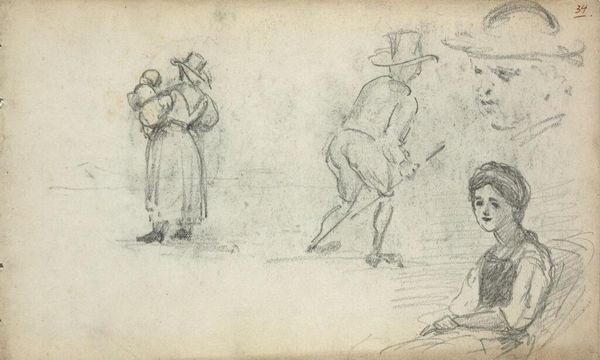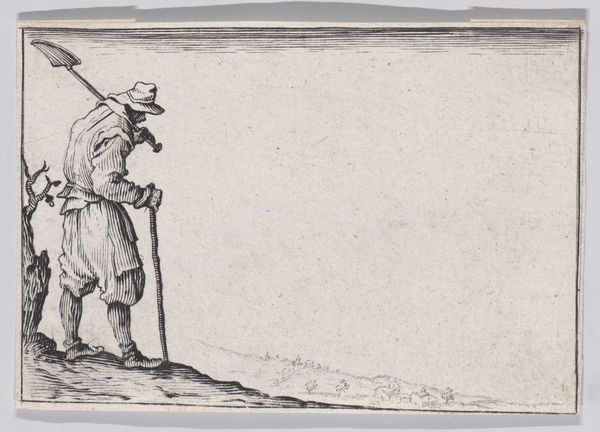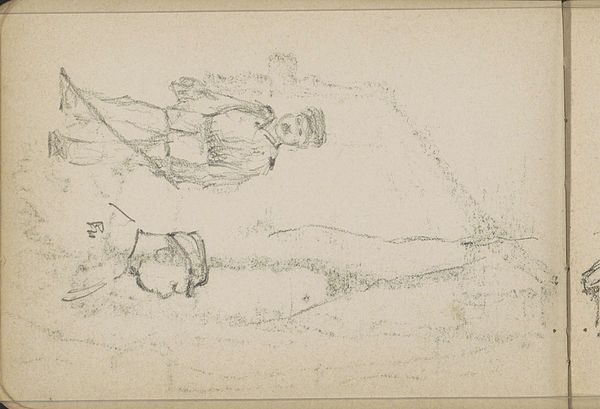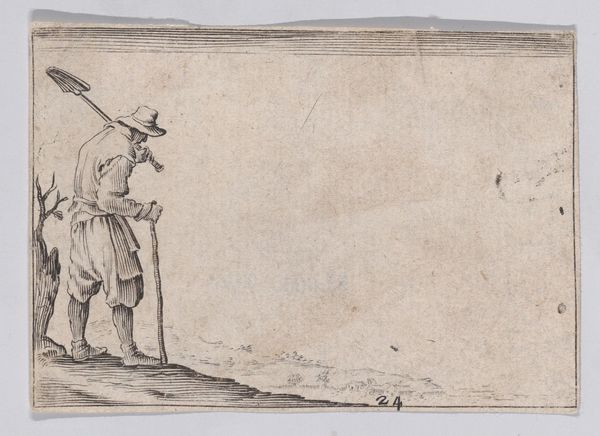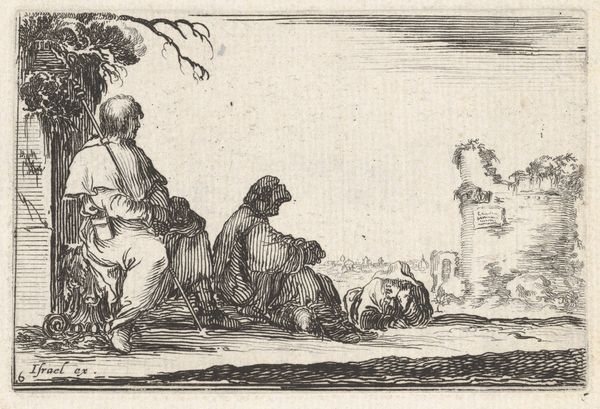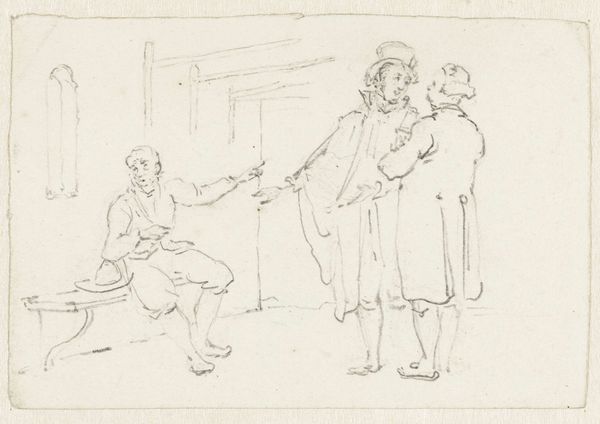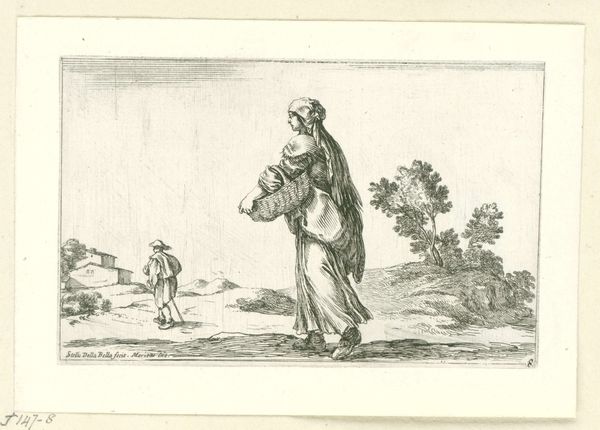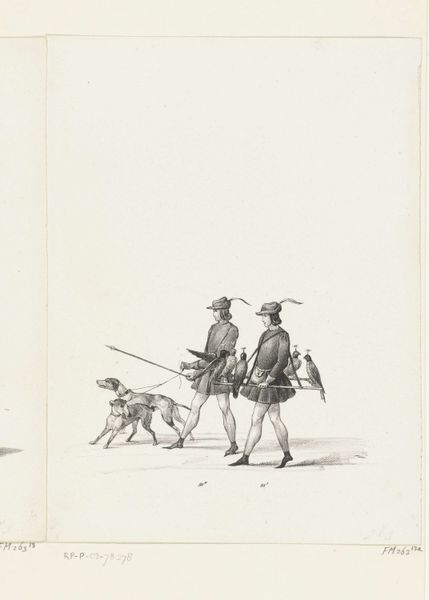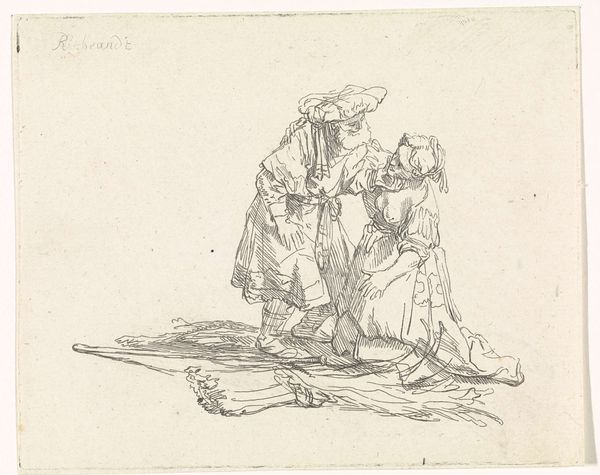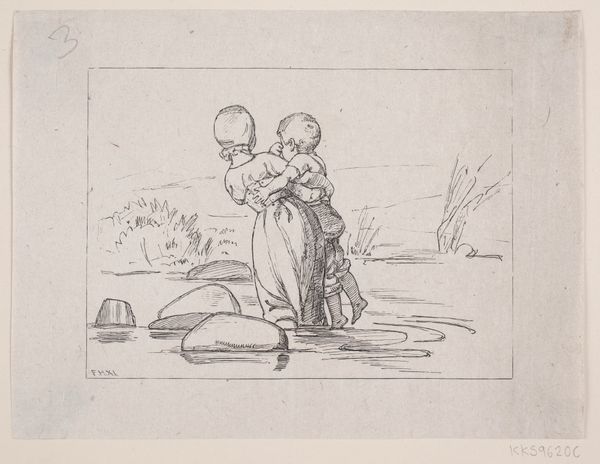
drawing, etching, paper, ink
#
portrait
#
drawing
#
baroque
#
etching
#
figuration
#
paper
#
ink
#
line
#
genre-painting
Dimensions: height 35 mm, width 60 mm
Copyright: Rijks Museum: Open Domain
Editor: This delicate etching from the Rijksmuseum, "Woman with Child on her Back" by Stefano della Bella, created sometime between 1620 and 1664, really strikes me with its simplicity. The lone figure seems so burdened. What do you see in this piece, looking at it from your perspective? Curator: The visible labor in Della Bella's print is central to understanding it. We must consider the material conditions represented – the worn clothes, the child carried as cargo, and the simple etching itself, made affordable through reproducible prints. The material contrasts sharply with the elaborate portraits of the aristocracy during the Baroque period. It seems to question these idealized portrayals. How does the work’s materiality challenge traditional ideas of high art? Editor: It's interesting you bring up the materials. The etching lines are so fine, yet they depict a life that seems so rough. It almost feels contradictory. And reproducible prints allowed for the distribution of these images, bringing the reality of everyday labor to a broader audience. Curator: Exactly. Consider how the means of production—the etching process—allowed for this wider distribution, bringing images of working-class people to viewers who might not otherwise see them. Is it romanticizing their condition or exposing it? The distribution would potentially influence broader society perspectives and perhaps stimulate a recognition of this socio-economic contrast. Editor: I think it brings attention to their struggle but perhaps from a removed perspective, since those buying prints at the time may have had different circumstances. It makes you think about the complex relationship between the artist, the subject, and the consumer. Curator: Precisely. And it invites us to question the role of art not just as aesthetic pleasure but also as a form of social commentary. I believe this work reveals how seemingly simple material choices can carry profound implications about power, labor, and the act of seeing itself. Editor: I hadn’t considered how much the material itself contributes to the work's message. Looking at it through that lens really changes my understanding of it. Curator: Indeed. Art provides new ways of seeing.
Comments
No comments
Be the first to comment and join the conversation on the ultimate creative platform.
